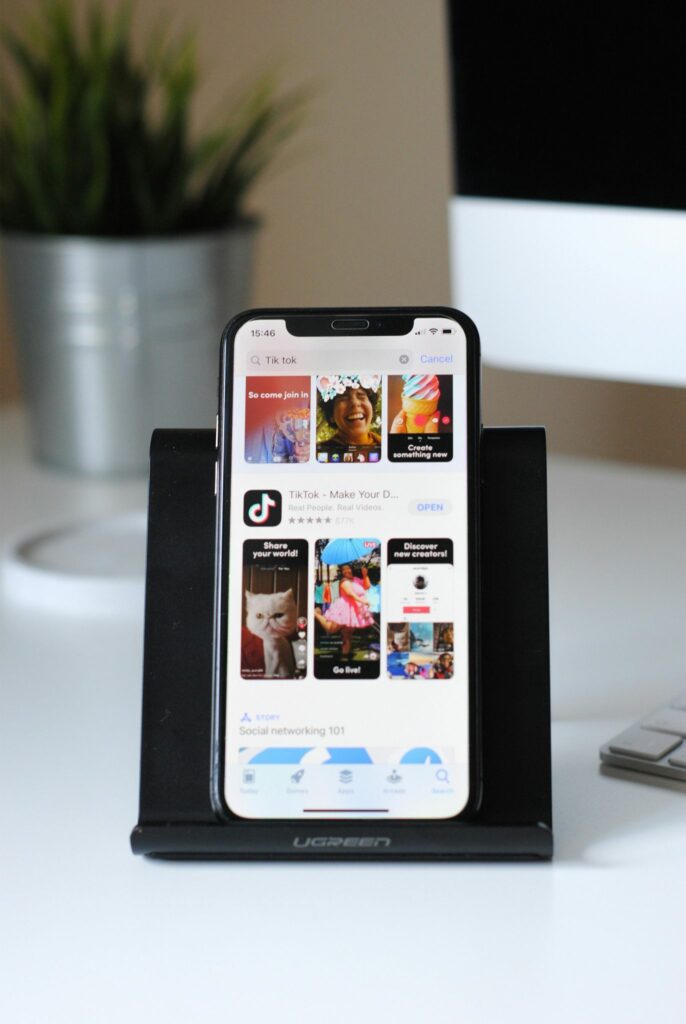TikTok is fully committed to the retail industry. Per the company’s hiring platform, one out of every three US job vacancies is for an e-commerce role. Even after its commerce tool, Shop, debuted almost a year ago, it is still giving first-time customers large discounts. Moreover, influencers, live vendors, and other people are being recruited to increase sales.
The business seems determined to accelerate the growth of online purchasing. Despite this, some users are annoyed by the feature—which allows them to purchase items like curling irons and power packs through videos, livestreams, and a special commerce tab—complaining about TikTok’s transformation from a comedy and dancing video app to a retail center.
Fortunately for TikTok, users aren’t being turned off by Shop’s encroachment. Still up for debate, though, are whether TikTok should place its future bets on shopping and whether Shop will bring in enough revenue to support its intrusive presence on the platform.
Speaking with e-commerce analysts, sellers, creators, and partners of TikTok Shop, it is evident that Shop is expanding gradually in the US and contributing significantly to sales for some businesses. However, information from other sources and statements from Shop partners paint a different image of the company’s first half of the year. It is not, however, an overwhelming success.
Let’s start with the positive news: Consumers are spending more money on TikTok than they were at the beginning of March. Researchers at Earnest Analytics, which monitors credit and debit card transactions, found that US customers who made purchases on TikTok Shop spent, on average, $67 between mid-June and mid-July, as opposed to $54 over four weeks in January.
Retention of users is one more area where TikTok excels. According to Earnest’s research, since its launch, it has had the highest average rate of repeat purchases of any major e-commerce site, except for Amazon. In other parts of the world, such as Southeast Asia, where social buying is more common, TikTok Shop is also gaining significant traction. On the other hand, its continued success in the US is not guaranteed.
Order-tracking system Between January and June, Route’s global order volume on TikTok Shop increased by a rather moderate 35%. By contrast, Shein’s order volume increased by 63% within that same time frame.
Furthermore, TikTok’s software needs to solve a few structural issues before it can compete in the e-commerce space.

One reason is that TikTok product sales frequently depend on influencers’ erratic viral videos. Large brands who wish to project future revenue upfront will find it difficult to sell the platform as a result. But the good times haven’t always lasted for small merchants who have made enormous dollars after going viral on a few videos. That may be annoying.
One vendor, who made a ton of purchases through TikTok Shop in April during its test stage, told Business Insider that “it’s nearly impossible to stand out with an authentic brand story.” “It’s gotten really over-saturated.”
Sales on TikTok are also not guaranteed by trends on the platform. Shop partners told BI that users occasionally click away from TikTok’s shopping cart to make purchases of items they see in a video somewhere else.
“People who think that they can come on here, go viral, and make a ton of sales really shouldn’t use this platform,” said Nicole Rechtszaid, co-founder of the TikTok Shop partner social-commerce company Ghost Agency. “It’s for those brands who are more innovative, who are willing to pivot and adapt and try things and fail and then rebuild and use new features and grow from there.”
What is effective for TikTok Shop?
Agency insiders told BI that TikTok Shop’s rise this year has been supported by well-timed advertising efforts and live selling.
Its constant reductions for both sellers and consumers encourage both one-time and recurring business. Additionally, thousands of videos were made using the company’s campaign hashtag in July as a result of its Deals for You Days promotion, which coincided with Amazon’s Prime Day event. According to a TikTok spokesperson who talked with BI, participating beauty brands included L’Oréal Paris, Maybelline New York, and NYX Professional Makeup.
According to the spokesperson, artists and merchants have also had success with live sales. In the last two months, Stormi Steele of Canvas Beauty and streamer Mandys Pena have each exceeded $1 million in revenue from live streams.
“The most exciting space for us right now and our clients has been live shopping,” Rechtszaid stated. “We are at the point where every single week we’re getting about five to 10 different inbound requests from brands who are interested in starting TikTok Shop Live.”
If live shopping takes the same path as applications in Asia, where consumers and influencers have embraced the format, TikTok may have a huge chance in the US. The information stated that in 2022, Douyin, TikTok’s Chinese sibling app, generated sales of almost $200 billion. A tiny army of outside instructors has been recruited by TikTok to assist producers in enhancing their livestreaming skills.

Even if those live streaming videos aren’t showing up on your For You page, Julian Reis, the founder and CEO of the e-commerce company and TikTok Shop partner SuperOrdinary, said, “TikTok is still very much prioritizing it, and the consumer is certainly starting to watch it.”
Shop’s hardest challenges are still to come
Industry sources told BI that although new formats like live shopping show potential and buyer retention have been high this year, TikTok’s biggest difficulty going forward may be retaining sellers (and luring in new, bigger businesses).
On TikTok, sales tend to come in viral bursts, much like non-shopping video trends do on the platform. While these spectacular occasions may increase demand, they do not ensure steady income over the long run.
“Just because a product goes viral doesn’t mean the whole brand goes viral,” Reis advised. “What we see is that that product will go viral and it could potentially sell millions of dollars and the rest of the brand is left behind.”
Certain firms are also criticizing TikTok for its promotional discounts, which increase sales, according to Reis.
“Brands may have complained pricing on TikTok is so low,” Reis stated. “But what it’s done is created a new consumer behavior and that was intentional.”
Not unexpectedly, as the company looks to attract new investors, a possible divestment or ban from the US for TikTok poses further problems
(Tashia Bernardus)
